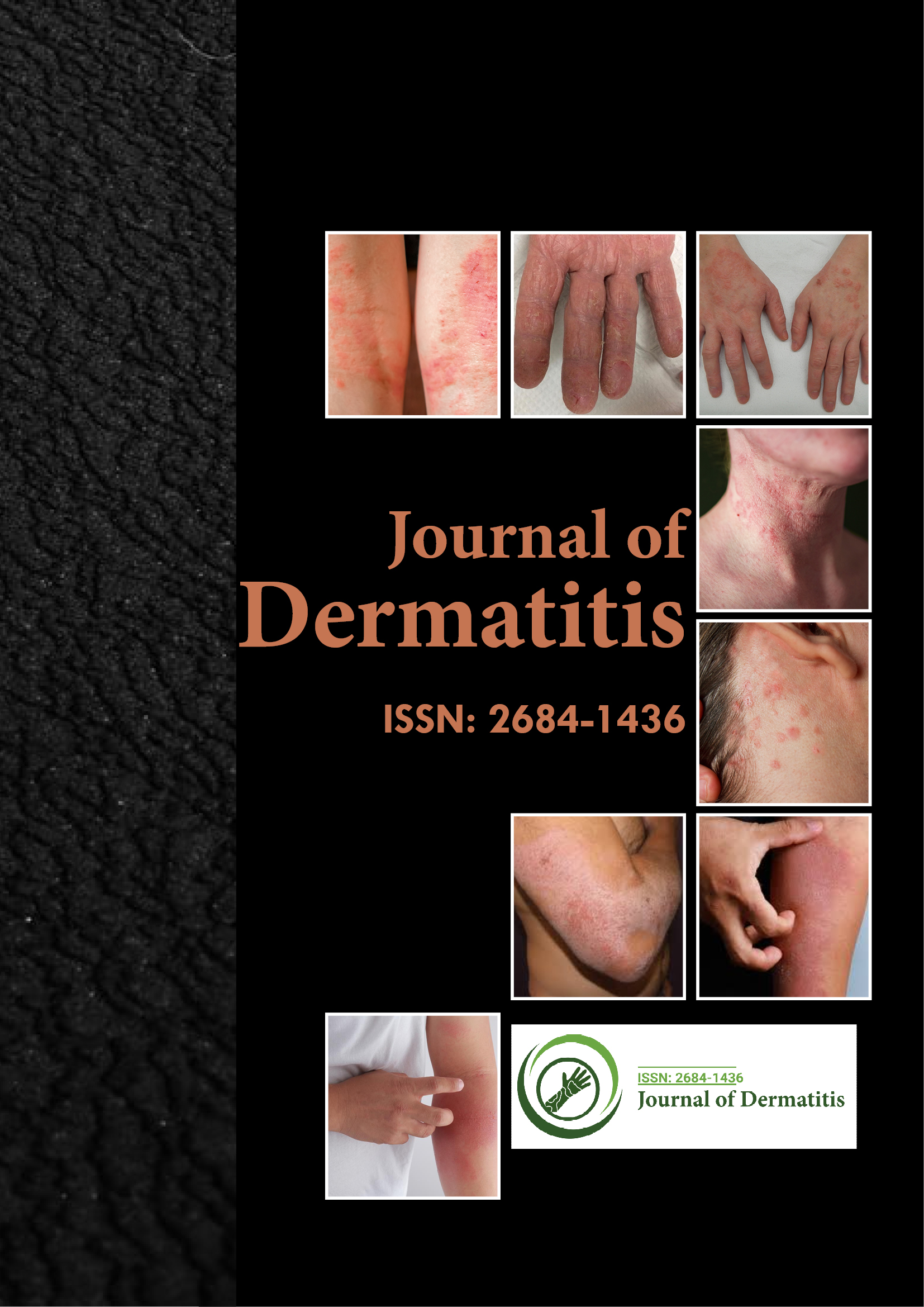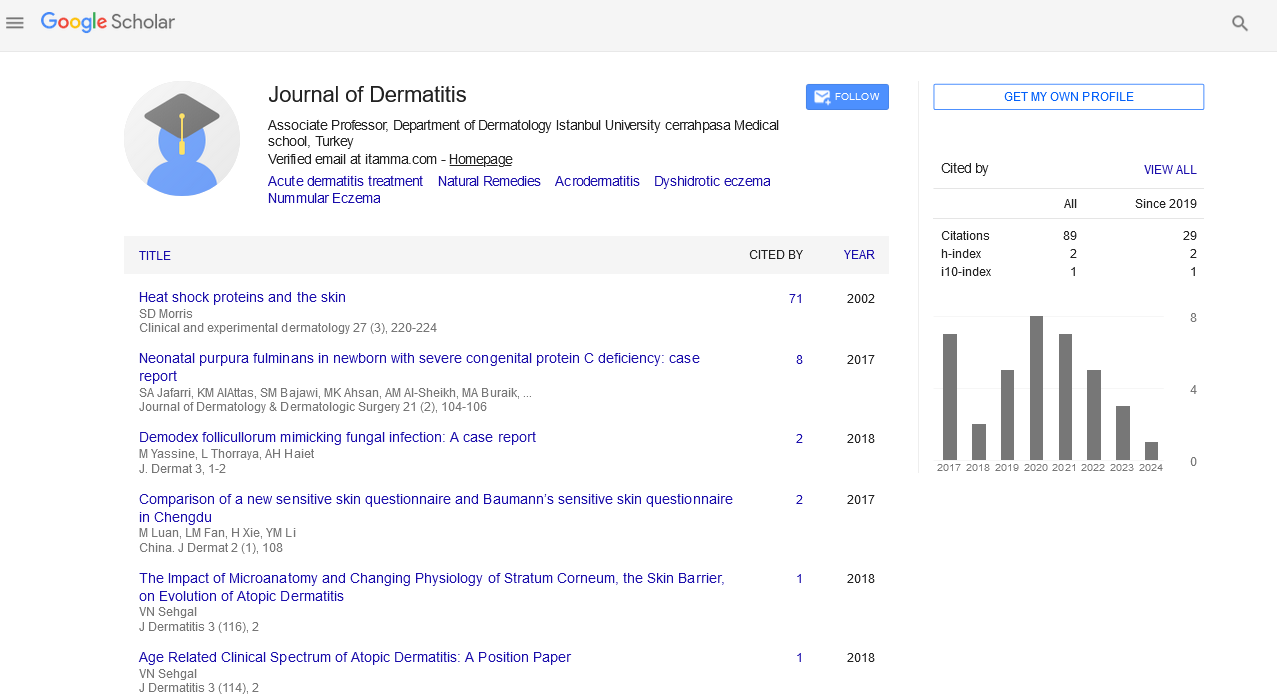Indexed In
- RefSeek
- Hamdard University
- EBSCO A-Z
- Euro Pub
- Google Scholar
Useful Links
Share This Page
Journal Flyer

Open Access Journals
- Agri and Aquaculture
- Biochemistry
- Bioinformatics & Systems Biology
- Business & Management
- Chemistry
- Clinical Sciences
- Engineering
- Food & Nutrition
- General Science
- Genetics & Molecular Biology
- Immunology & Microbiology
- Medical Sciences
- Neuroscience & Psychology
- Nursing & Health Care
- Pharmaceutical Sciences
Abstract
Accumulation of Pigment Particles Used in Tattooing in Human Skin-Results of Histological Studies
Anna Charuta*, Agnieszka Paziewska, Iwona Luszczewska-Sierakowska, Marta Gajewska Justyna Olszewska, Michalina Kosowska and Agata Wawrzyniak
The reports of the dangers of tattoos and the observed side effects have increased interest in the toxicity of tattoo pigments. The effects of tattoo pigments on skin homeostasis remain largely unknown. This is why research on the accumulation of pigment particles in the layers and cells of the skin (macrophages, fibroblasts) is so important. The main aim was to analyze which cells phagocyte tattoo ink in human skin. The accumulation of pigment particles used in tattooing in individual skin layers and in skin cells such as macrophages and fibroblasts was analyzed. The test material was human skin fragments with a tattoo, measuring 3 × 3 cm (including subcutaneous tissue), taken from human cadavers from the deltoid region, thorax, abdomen and the lateral aspect of the arm. Immunohistochemical staining was performed to identify Leukocyte Common Antigen (LCA) leukocytes without T and B lymphocyte divisions and inflammatory mediator cells–CD68 macrophages. Basic topographical staining allowed observing the distribution and penetration of tattoo ink particles in human skin. Tests performed showed the presence of inflammation around the tattoo dye papules, as confirmed by the presence of leukocytes and in macrophages visible in microscopic images. Pigment particles were also found to accumulate in macrophages and fibroblasts. The study shows that macrophages and fibroblasts accumulate dye molecules used in tattooing processes.
Published Date: 2025-01-14; Received Date: 2023-08-14

